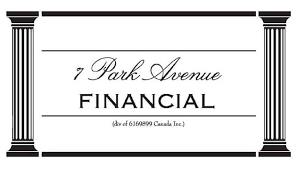|
Unlocking Liquidity: The Power of Asset-Based Finance Factoring Companies
Revolutionize Your Cash Flow with Asset-Based Finance Factoring
YOUR COMPANY IS LOOKING FOR AN ASSET-BASED LINE OF CREDIT FINANCING IN CANADA!
You've arrived at the right address! Welcome to 7 Park Avenue Financial
Financing & Cash flow are the biggest issues facing businesses today.
ARE YOU UNAWARE OR DISSATISFIED WITH YOUR CURRENT BUSINESS FINANCING OPTIONS?
CALL NOW - DIRECT LINE - 416 319 5769 - Let's talk or arrange a meeting to discuss your needs
EMAIL - sprokop@7parkavenuefinancial.com
Asset-based finance factoring companies revolutionize how businesses access and manage working capital
7 Park Avenue Financial originates business financing solutions for Canadian Businesses – We offer ASSET BASED FINANCE solutions that solve the issue of cash flow and working capital – Save time and focus on profits and business opportunities to fund growth

Unlock your business's financial potential - effortlessly.
Asset-Based Financing Cash Flow Solutions
INTRODUCTION
An asset-based credit line is an emerging financial alternative in Canada for companies of all sizes that wish to maximize working capital in terms of their growth needs. This type of lending revolves around loans to your business.
The collateral of your assets and your ability to generate sales provide all the liquidity you need to operate and grow.
Asset-based finance factoring companies allow businesses that are struggling with the challenges of liquidity / quick cash flow and access to capital.
These specialized non-bank commercial finance companies convert accounts receivable and inventory, ie company assets, into immediate working capital, thereby facilitating smoother operational flows and enabling growth without the credit approval requirements of traditional Canadian banking.
THE RISE OF ' ABL ' FINANCING
More often than not, asset-based lending and alternative financing is associated with companies unable to arrange or qualify for what most business owners term as a bank operating line of credit. Asset-based lending is known as ' ABL financing ' and has risen to great popularity, first in the U.S., where it originated, and now to the Canadian marketplace.
Although occasionally Canadian banks choose to participate in Asset Based Lending through separate units within the banks, the vast majority of asset finance providers are commercial finance companies independent of the banks.
WHY DO COMPANIES CONSIDER ABL FINANCE AND THE ASSET BASED LOAN SOLUTION
Asset-based credit lines and loans are used for a variety of purposes - we can make the case they are an ' all-season ' Canadian business financing solution.
THE DIFFERENT USES OF ASSET BASED FINANCE
Non-bank asset-based revolving credit facilities
Companies that are growing quickly and can't access all the capital they need
Structuring a merger or acquisition or a management buyout
Seasonality in business financing needs - for example - Xmas retailer, etc
Companies that have high debt/equity ratios which are ineligible for traditional finance solutions
Turnaround and restructuring facilities/refinancing of existing debt
Financing The Purchase Of A Business
HOW IS ASSET-BASED LENDING DIFFERENT FROM BANK BORROWING
New clients of 7 Park Avenue Financial want to know the difference in bank borrowing versus alternative lending solutions such as ABL.
In banking, it's all about traditional corporate credit quality, and that boils down to profits and capital structure design around a solid balance sheet with solid owner equity. Those elements historically define a great company poised for continued success.
On the other hand, asset-based lending revolves around a shorter-term focus on converting current assets in cash flow and an understanding of the true value of the collateral of the company.
That latter ABL focus doesn't require that a company be doing as well as a bank-financed company. So sales turnover and the liquidation value of assets are essentially what the ABL loan is about when it comes to corporate finance.
In accessing asset financing via an asset-based credit line for working capital and cash flow, your focus should be on the short-term liquid assets of receivables and inventory.
That will allow your borrowing facility to fluctuate and lower overall financing costs. That constant turnover of sales into cash will make the ABL solution even more beneficial, and, important to know; these facilities can easily be increased as you generate higher revenues.
Credit types vary, and traditional bank financing places a heavy emphasis on the overall financial position of your income statement and balance sheet; therefore, if that is the focus, then firms such as yours with either balance sheet issues or experiencing temporary financial losses or other negative circumstances do not quality for margined lines of credit with institutions such as Canadian chartered banks.
HOW IS THE ASSET-BASED CREDIT LINE LIMIT CALCULATED?
The calculation of your borrowing limits under your credit facility has some basic formulas attached to it. Your accounts receivable and inventory are the two key drives, but fixed assets and secured real estate can also play a key role.
Your facility's formula and final limits around risk are called a ' borrowing base,' and this number is reviewed, typically every month, to determine what your new limits are based on the value of your a/r and inventories.
This is the revolving part of the facility that your firm will borrow on, and the fixed assets and real estate are often under a separate term type of loan, unlike inventory and equipment, which are financed together if required.
Usually, the advance rate on your sales/receivables is higher than the inventory part of the facility. Still, it should be recognized that asset-based lenders are experts in understanding the true value of inventory and are in a position to generate higher advance rates than chartered banks.
Typically A/R under 90 days is an essential part of the borrowing formulas. Typically funds are advanced 85-90% of the a/r portfolio under 90 days.
As you collect receivables, you reduce the advances that have been made under the facility, not dissimilar to a bank LOC. The ABL underwriter will look at your overall DSO/COLLECTION period and individual issues such as anyone's client being a large percentage of your sales ( 'concentration' ) or any set-offs you might have in place with suppliers or customers.
KEY POINT - Your firm must be up to date on provincial and federal taxes, as CRA arrears can destroy your lender's security on the facility.
If you do have CRA arrears, they can be paid out at the start of the facility, or you can ensure you have a documented payment plan in place on those arrears. Inventory advances are where Asset Based Lenders shine. They understand the different inventory components such as raw materials, work already in process, and finished goods.
Their ability to underwrite and advance against inventories is a key differentiator in asset-based lending. To you, the borrower, it's simply more borrowing power!
Asset-based lines of credit take the reverse position from banks, simply that you have the assets, let's finance your firm on the strength of your assets, with minimal, if any, focus on ratios, covenants, outside collateral, operating metrics, personal guarantees, etc.
An asset-based line of credit partner will tend to work through your unique challenges in your industry or your business model.
Some of those challenges might be the seasonality of your business or the special ‘one-of' situations we referred to. Some of those circumstances might be making an acquisition, restructuring your firm, or being in receipt of large new contracts or purchase orders that are out of line with your traditional financing arrangements.
Operating capital financing, or rather the lack thereof(!), can often be the reason your firm is unable to take advantage of strong market opportunities to maintain your competitiveness.
One of the largest parts of an asset-based lending facility is receivables financing. In small firms, this is often taken care of by a factoring facility – your invoices are sold to the lender, you receive immediate cash, and you can structure facilities around such issues as credit insurance, non-recourse to your firm, etc.
The asset-based line of credit, in a true sense, offers all of the advantages of factoring but operates instead like a true bank facility – your receivables and inventory are highly margined to the maximum value, and your access to cash availability is directly commensurate to your sales growth.
In other words, you have no real cap on your operating facility – you receive cash for receivables and inventory as fast as you can sell and move our product and services! Your firm will probably find that anyone in the asset-based finance area has a stronger knowledge of your business model and assets.
If your company has a strong focus on understanding the true collateral value in your business and is focused on asset turnover in a/r and inventory, your firm will be a true beneficiary of the asset-based credit line. The general attributes of ABL financing
WHAT IS THE COST OF ASSET-BASED LENDING?
Factors To Consider Asset-based lending credit lines and facilities usually have higher costs than bank financing when it comes to credit in the capital markets.
The low-interest-rate environment has allowed asset-based lenders to become more competitive. In a small number of cases, asset-based lenders can be competitive or on par with banks on higher-quality deals.
From a borrower's perspective, clients need to weigh the access to significantly more business capital versus the cost, more so when your company cannot, in fact, access bank credit.
Other tradeoffs are the requirements for more regular reporting on your receivables and payables and inventories and any miscellaneous audits or appraisals that the asset-based lender might require to justify the higher borrowing levels.
As we have stated, the ability to access cash without the typical bank covenants and operating metrics is always top of mind with borrowers utilizing asset-based lending. The overall flexibility in an asset-based credit line tends to work well beyond traditional finance when all the options of each type of financing are considered.
While determining your borrowing strategy should be individualized based upon each business and tailored to your business’s specific needs, borrowers seeking working capital financing need to seriously consider the benefits of working with an asset-based lender, as it can provide greater flexibility and options for businesses seeking to look beyond traditional bank lending—a share which lending strategy has worked best for your business in the comments below.
Since asset-based loans don’t rely on the borrower’s operating performance but on the quality of the collateral, fewer financial covenants are required of the borrower. Compared with traditional bank lending, ABL lenders typically require a much more limited degree of reporting back to the lender.
KEY POINT - ABL facilities usually start at a minimum of 250k relative to the approved sized of the borrowing facility.
This is the lowest end of the scale, and there is no real upper limit to a company borrowing if the firm satisfies assets and sales revenue size. If a company is too small, or for some reason, is not eligible for abl lending, then a factoring/ receivable financing facility should always be considered.
Even startups or very early stage and smaller firms can consider the factor funding solution. Access to cash flow is fairly quick and easy for firms looking to finance receivables. Providing your financials, aged payables and receivables and some other general info on your firm will typically get you started and approved quickly.
KEY TAKEAWAYS
Invoice Factoring allows businesses to sell their invoices at a discount to obtain immediate cash, thus eliminating waiting times for customer payments.
Accounts Receivable Financing leverages a company's unpaid invoices as collateral for a loan, providing a line of credit based on the value of these receivables.
Working Capital Solutions are critical for maintaining daily operations, managing expenses, and investing in growth opportunities without dipping into long-term resources.
Cash Flow Management is vital for ensuring that a business has the liquidity to meet its short-term obligations and invest in its future.
Credit Risk Assessment plays a pivotal role in determining the terms of financing, as it evaluates the likelihood of default by the debtors whose invoices are being financed.
7 Park Avenue Financial recommends a CONFIDENTIAL RECEIVABLE FINANCING facility for firms considering just an a/r solution outside the asset-based credit line.
This type of facility allows you to cash flow all your sales immediately, and your firm is responsible for all the billing and collecting, similar to a bank facility. Instead of an interest rate, commercial factoring firms charge a fee for discounting the invoice, and this is typically in the 1 - 1.5 % range, so if your firm absorbs that fee and has good margins, your cash flow problems are certainly solved.
CONCLUSION
Talk to 7 Park Avenue Financial, a trusted, experienced and credible advisor in Canadian business financing, to determine if the advantages of an asset-based line of credit work for your firm! It is a business loan with collateral that works.
FAQ: FREQUENTLY ASKED QUESTIONS / PEOPLE ALSO ASK / MORE INFORMATION
What is asset-based finance?
Asset-based financing can provide the capital needed for day-to-day expenses. This is typically accomplished through accounts receivable invoice value and inventory loans that use equipment or real estate as collateral.
How does asset-based finance factoring work to improve cash flow?
By selling outstanding invoices to a factoring company, businesses receive cash advance immediate funds, enhancing cash flow and operational efficiency.
Can asset-based financing help in managing credit risk?
Yes, because factoring companies often assess the creditworthiness of your customers, thereby managing and mitigating credit risk on your behalf.
What are the primary benefits of using asset-based finance factoring?
Immediate access to capital, improved cash flow, credit risk management, and the ability to seize growth opportunities without incurring debt.
How does accounts receivable financing differ from traditional loans?
It focuses on the value of your receivables rather than your company's credit rating, providing a more accessible financing option. A third party company .. ' the factor ' pays your business immediately on receipt of your invoices for commercial or government accounts.
Are there any industries that particularly benefit from asset-based finance factoring?
Yes, industries with long invoice payment cycles, such as manufacturing, wholesale, and B2B services, find it especially beneficial.
What is the impact of digital transformation on asset-based finance?
Digital platforms have streamlined the financing process, making it faster and more efficient for businesses to access funds.
How does the economic climate affect asset-based finance factoring companies?
Economic downturns often increase demand for asset-based financing as businesses seek more flexible funding solutions.
Can startups and small businesses benefit from asset-based financing?
As it provides them with a critical cash flow boost without requiring traditional collateral that they might not have.
What are the typical fees associated with asset-based finance factoring?
Fees vary but generally include a percentage of the invoice amount, depending on the volume, risk, and term of the agreement.
How do asset-based finance companies handle non-payment by customers?
They may offer non-recourse factoring, which means they assume the risk of non-payment, protecting your business from financial loss.
How quickly can businesses access funds through asset-based finance factoring?
Funds can often be accessed within 24 to 48 hours after the invoices are verified and approved by the factoring company.
What makes asset-based finance factoring an attractive option for growing businesses?
Companies typically us ABL financing for Its flexibility, quick access to funds, and the ability to leverage future sales for current growth endeavours make it highly attractive.
How do businesses qualify for asset-based finance factoring?
Qualification primarily depends on the creditworthiness of the invoiced customers and the value of the receivables, not the business's credit score. In true abl facilities, the value of a company's assets and sales determines the approval amount of the facility.

' Canadian Business Financing With The Intelligent Use Of Experience '
STAN PROKOP
7 Park Avenue Financial/Copyright/2024

Stan Prokop is the founder of 7 Park Avenue Financial and a recognized expert on Canadian Business Financing. Since 2004 Stan has helped hundreds of small, medium and large organizations achieve the financing they need to survive and grow. He has decades of credit and lending experience working for firms such as Hewlett Packard / Cable & Wireless / Ashland Oil
|